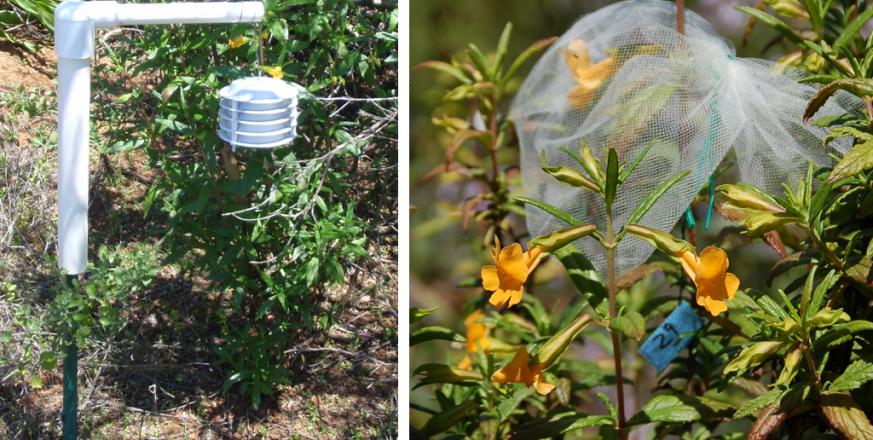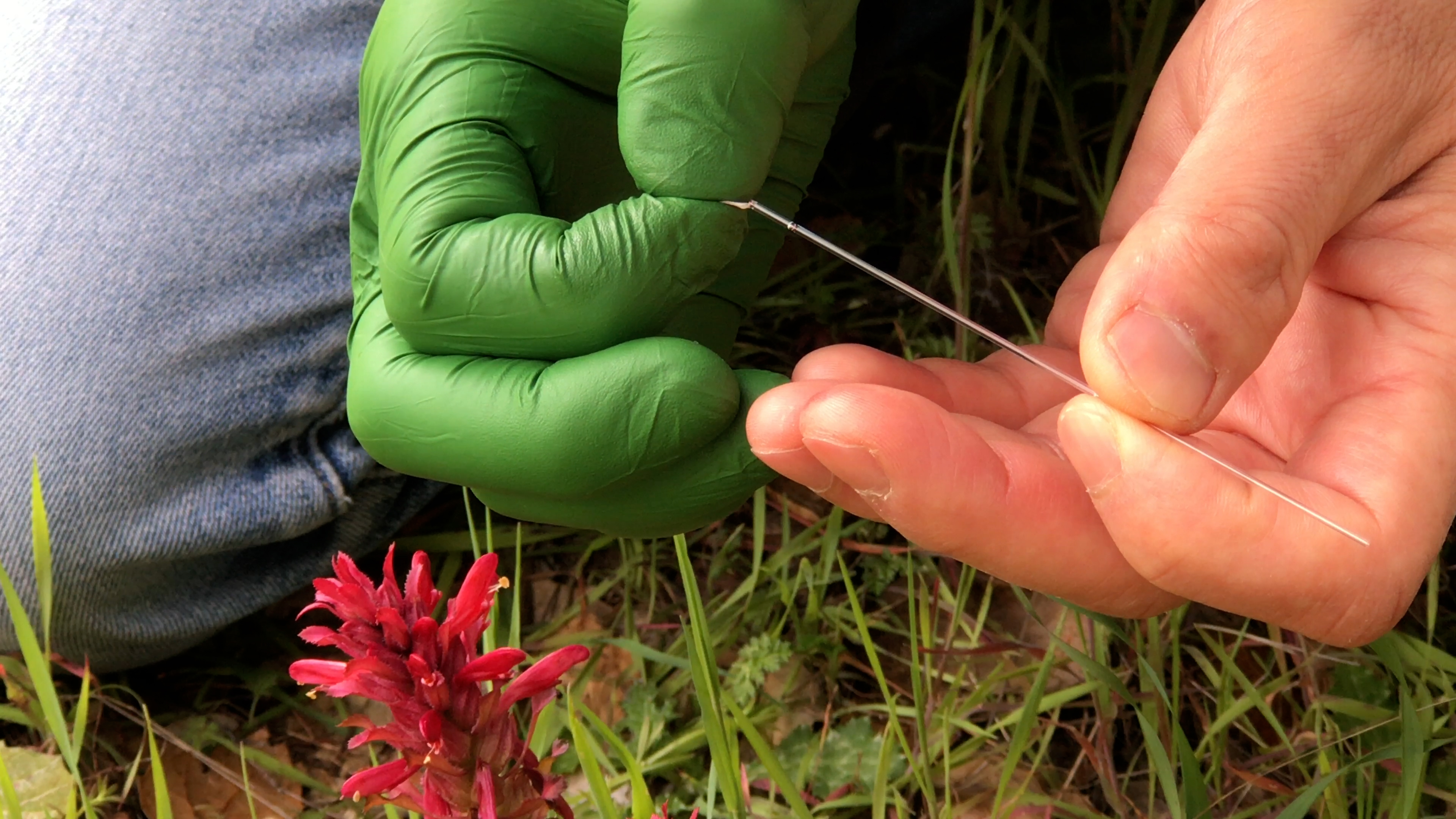Floral ecology of Mimulus aurantiacus and Pedicularis densiflora

Summary
This study uses the microorganisms found in the floral nectar of the sticky monkeyflower (Mimulus aurantiacus) and Warrior plume (Pedicularis densiflora) to ask basic questions about how ecological communities assemble. Multiple species of microbes, mainly those of yeast, arrive at flowers of these species by hitchhiking on hummingbirds and insects that visit flowers as pollinators. Upon arrival, the microbes multiply by using nectar as their resource. As such, the flowers we are studying are distinct, ephemeral habitats for the microbes, collectively functioning as what ecologists call metapopulations and metacommunities. With these systems, we study how the order in which species arrive influences the coexistence of species. We also study how environmental conditions (such as temperature, light, water, and herbivores) affect flowering phenology, how flowering phenology in turn affects the community assembly of nectar-living microbes, and how the microbial assemblage modifies nectar chemistry, such as pH, sugar concentration, and alocohol content.
This study is also designed to integrate research and teaching. Undergraduate students taking the Biology 44Y class use the Mimulus and Pedicularis systems to learn how to do ecological research, with an emphasis on hypothesis testing. The research benefits from the teaching, because the data collected and analyzed by the students provide new insights and long-term information.
The Mimulus plants involved in the study at Jasper Ridge can be identified by posts with white plastic arms holding a temperature recorder in a radiation shield. Some plants also have a plastic jug associated with them for a water addition treatment. During flowering, some plants of each species have netting installed to exclude insects or have large mesh cylinders to exclude hummingbirds.
▶VIDEO: Sampling nectar in the field with Tad Fukami--how and why
Useful Links
Visible from Trail/Road
7 - Hillside Lab
8 - Dam View
14 - Lakeside
D - Hillside Lab Road
E - Chaparral Fire Road




